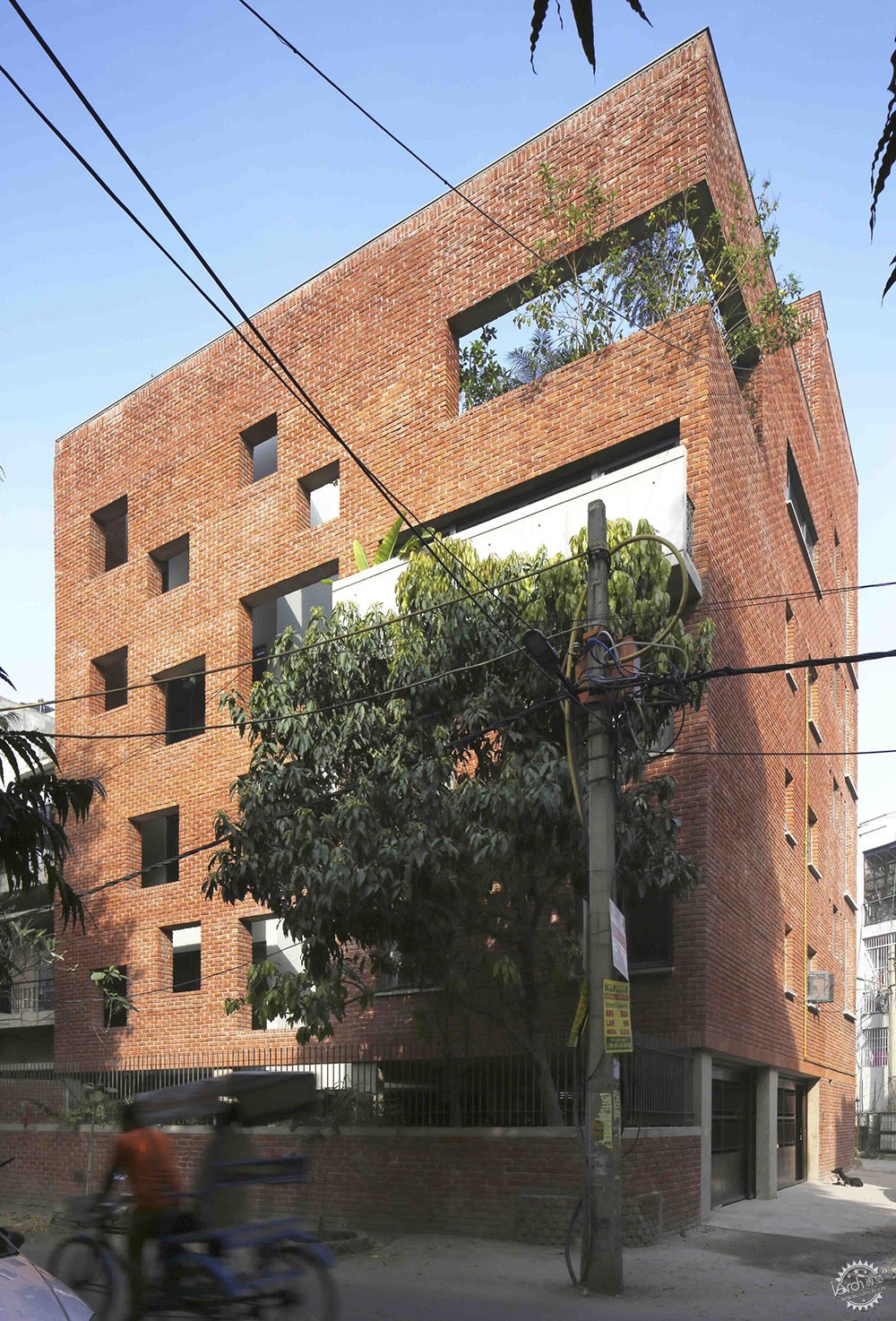
House with a Brick Veil / Studio Lotus
由专筑网邢子编译
来自建筑事务所的描述:随着一些发展中国家快速而无计划的城市化,多数住宅区已经成为混凝土和噪音的丛林——包括视觉和听觉。在德里中部一个拥挤的区域内建造的“砖面屋”,试图在隐私与邻里间的连接性之间进行角力,在探索中产阶级多住宅单元潜在解决方案的同时,让居民可以享受他们与自然的联系。在这个过程中,建筑质疑了简单的规划原则是否可以在大多数亚洲紧凑的城市场景中创造出更优生活质量的可能。
Text description provided by the architects. With increasing unplanned urbanization in several developing nations, most residential neighbourhoods have become jungles of concrete and noise – both visual and aural. Built within a congested locality in Central Delhi, the House with a Brick Veil seeks to negotiate the fine line between privacy and connectivity with neighbourhoods. While exploring potential solutions for middle class multi-dwelling units built on tight site constraints, the House allows its residents to enjoy their connection with nature. In doing so, it interrogates whether simple architectural planning principles can create the parameters of a higher quality of life within a home in tightly clustered urban scenarios that are typical of most Asian cities.

新德里糟糕的城市规划导致了无计划和嘈杂的街区的发展,这些迫使住户关闭前窗和阳台,导致了室内黑暗、通风不畅,取而代之的是人工照明,而那些负担得起的人可以使用空调。在这种情况下,除了一些零星的树木外,周围的景色也很少。该地块的东南、西北和东北侧分别被主路和小路包围,尤其是在白天,人们感受着拥挤的街道和高分贝的噪音,最好的光线(从南向)和最差的视野在同一个街区。
New Delhi’s poor urban planning laws have resulted in the development of unplanned and noisy neighbourhoods. This has forced homeowners to keep their front windows and balconies shut; leading to dark unventilated interiors, substituted with artificial light, and air-conditioning by those who can afford it. In this case too, the surroundings offer scant views except for a few scattered trees. The site is enveloped on the South East, North West and North East sides by a major road and secondary roads respectively – subjecting one to ugly views of congested streets and high levels of noise especially during the day. The best light (from the south quadrant) and the worst views also concur in the same zones.
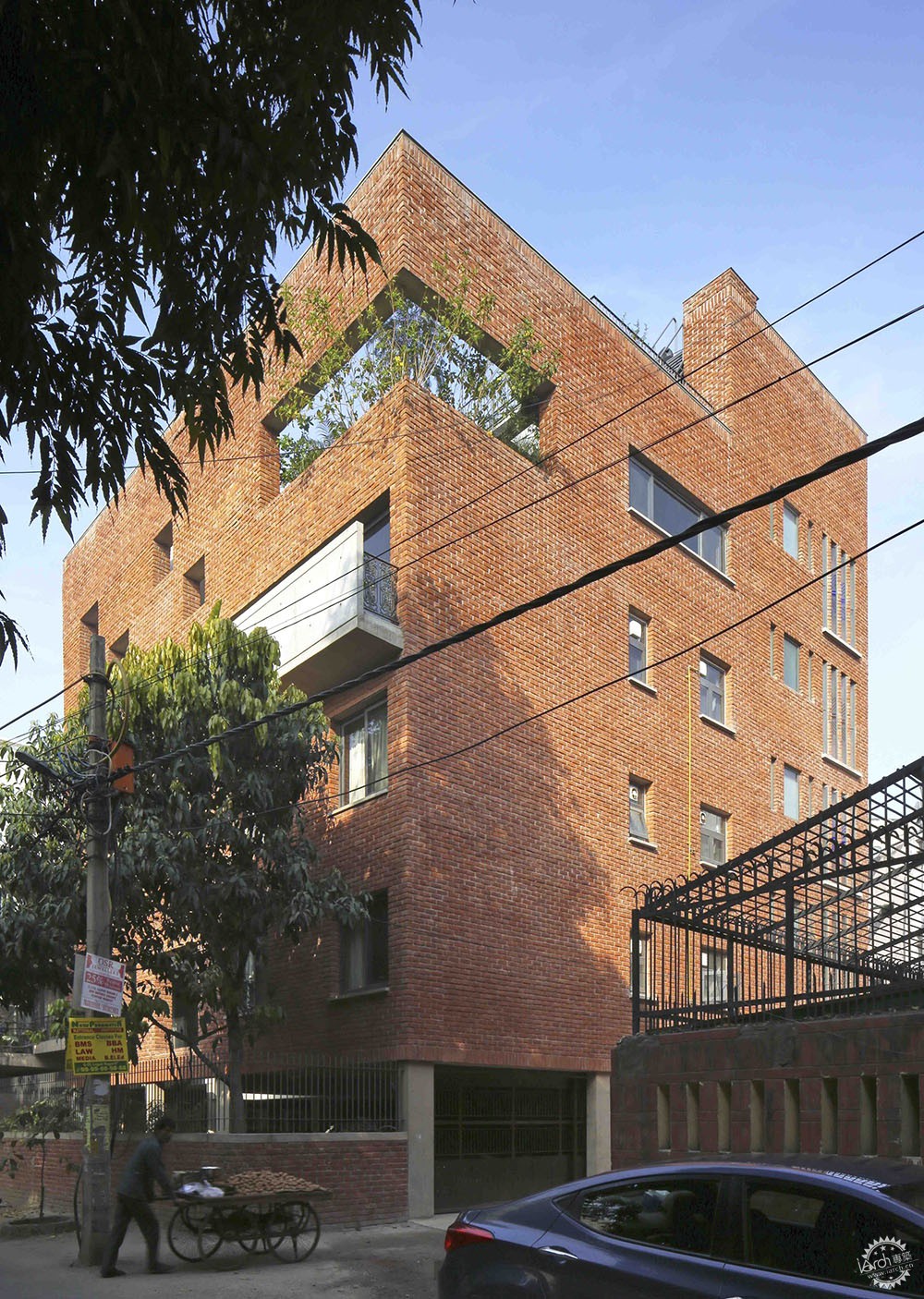
这栋房子是由3个公寓构成——一个复式公寓为这对保守的退休夫妇准备,两个较小的公寓为他们的已婚子女和家庭准备。设计的目的是在这个混乱的社区中创造一个平静的绿洲。由于该地区悠久的砖瓦生产传统,住宅被设计为具有高热质量的砖砌体结构,从而最大限度地增加日光并减少太阳辐射。一面345毫米厚的砖墙像面纱一样包裹着建筑——时而飘离,形成私密的庭院,方便采光和通风。
The house is built as a stack of 3 apartments – a duplex for the conservative retired couple and two smaller flats for their married children and families. The brief was to create a calm oasis within this chaotic neighbourhood. In line with the strong tradition of brick production in the region, the House is conceived as a brick masonry structure with a high thermal mass, thereby maximizing daylight and minimizing solar gain. A 345-mm thick brick wall wraps around the building as a veil – floating away from it at times, to form intimate courtyards for light and ventilation.

房子的形式是根据其环境而产生的——结合了其环境、气候方位、建筑细部和客户需求。因此,居住空间远离东南面,即道路较嘈杂的一侧,这使得冬天的阳光能够在德里最寒冷的时节穿透房屋。
The form of the house has been generated as a response to its context - a combination of its setting, climatic orientation, the building bye-laws and client requirements. The living spaces have thus been kept away from the South-East face, the noisier side of the road, which allows for the southern winter sun to penetrate the house in cold Delhi winters.
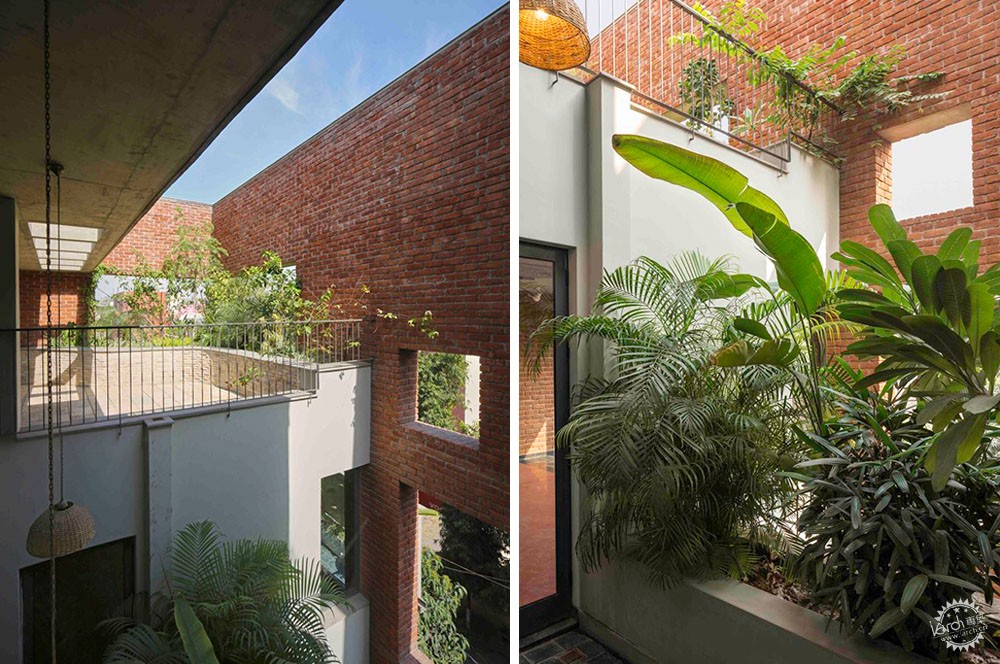
各个部分的配置都是为了应对房屋的潜在景观,合并后1000平方米(每层约200平方米)的布局,利用了最大允许的建筑面积形式——即顶层两层为复式,底层两层为独立单元。
Sections have been configured to respond to potential views from the house. The layout for the combined 1000 sq.m floor plate (about 200 sq.m per floor) residence, utilizes the maximum permissible built-up area - with the top two floors as a duplex and the lower two floors as independent units.
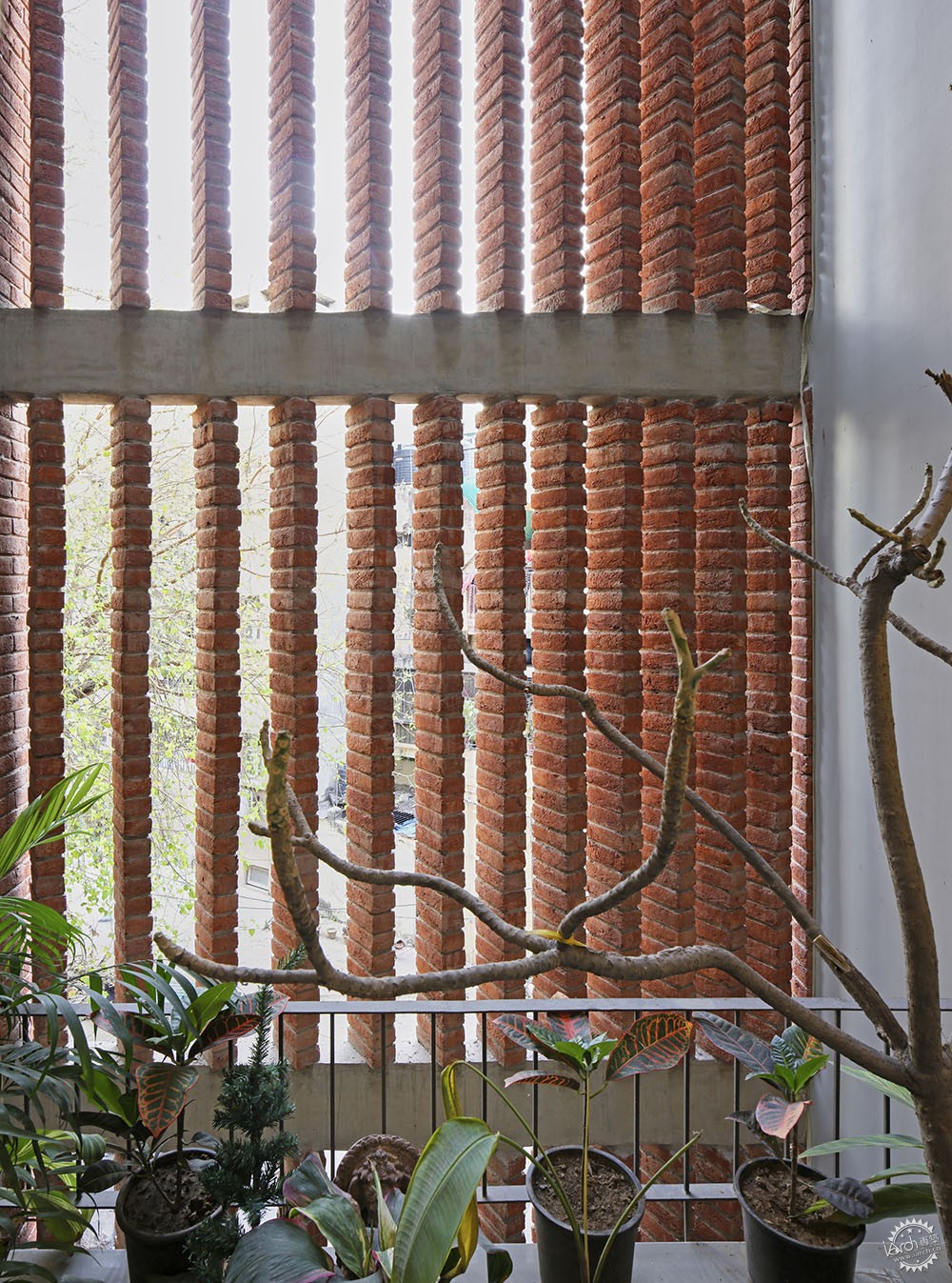
在探索和权衡了各种方案与室内空间的日照和框景要求后,建筑师将开放的体量一分为二,置于在房屋的两端,以构成远离周围环境的通风和采光井。
设计将建筑向后推入场地,以围合庭院,并在自身周围包裹一层表皮,作为住宅和城市之间的缓冲区。外表皮中的开口的几何形状独立于每层楼的围墙,因此避免了对冲的视线,兼顾了私密性和向外的视野。"砖面层"的设计不仅将居民与相邻道路上的繁忙交通隔离开来,又带来了自然光和通风。
After exploring and weighing options against the requirements of day-lighting and framing views to interior spaces, the open volume was split into two and placed at the opposite ends of the house to create ventilation and light wells stepped away from the immediate surroundings.
The plan pushes the building backwards into the site to extract courtyards and wraps a skin around itself as a buffer between the home and the city. The geometry of openings in the outer skin is independent of the fenestration of each floor, thus allowing a hit-and-miss line of sight through them – juggling privacy and views to the outside. While the design of the “brick veil” screens residents from the heavy traffic on adjoining roads, it brings in natural light and ventilation.
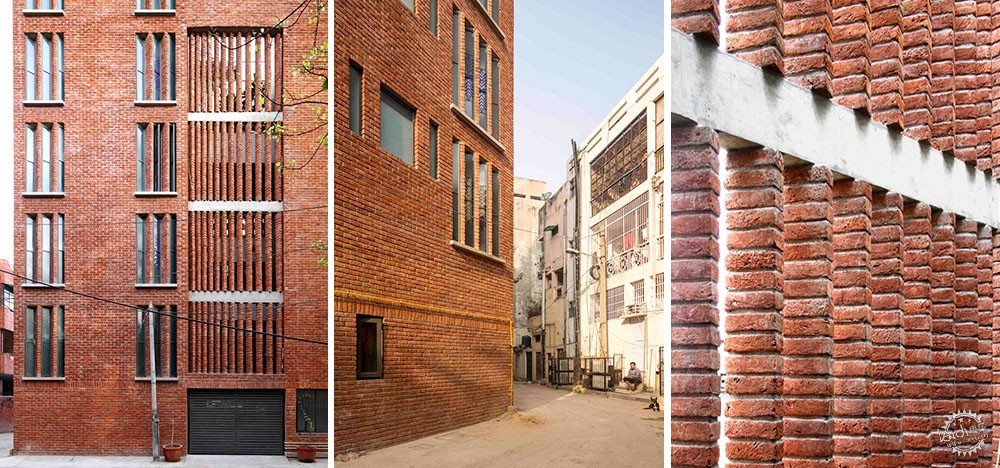
生活空间形成建筑中心,两边是两个庭院,房间围绕着核心布局,每个区域至少有两面墙的开口,以便自然交叉通风。折叠门和滑动隔断让小户型的空间无缝流动,灵活运用。小露台被拉入屋内,从中央生活空间的两侧流向双庭,作为漂浮在半空中的小花园。多层露台和屋顶上的密植植物在构筑的体量中增加了一层柔和的遮挡,并辅助在三面开敞的空间中创造出私密性。
The living spaces form the centre, with the two courtyards on either side. Rooms are laid around the core, with each area having openings on at least two walls for natural cross-ventilation. Folding doors and sliding partitions allow for a seamless flow of spaces for the small house to function flexibly. Small terraces are pulled into the house, flowing out from either side of the central living spaces into the twin courts to serve as small gardens floating mid-air. Dense plantations on the multiple terraces and the rooftop add a soft layer of screening in the constructed volume and aid in creating privacy in a compact space, which opens out to three out of its four sides.
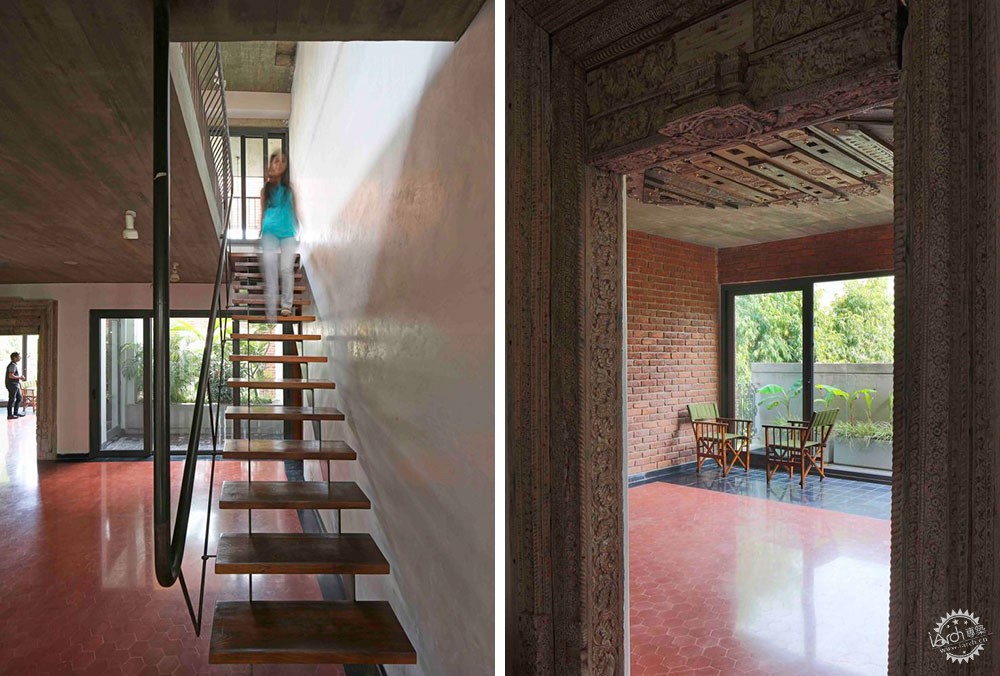
我们使用了那些随着时间的推移而优雅地老化的材料,以保持建筑过程的坦诚和简单,同时关注工匠工艺,彩绘玻璃窗和回收门等工艺细节被应用到裸露的砖块、现浇的水磨石地板和木板混凝土板的新建筑中,为其注入了传统而又现代的叙事感。
Materials that age gracefully over time have been used to keep the construction process honest and simple, with an attention to a high degree of artisanal craftsmanship. Crafted details such as stained glass windows and reclaimed doors are inserted into the new construction of exposed brick, cast in-situ terrazzo floors and planked concrete slabs to imbue it with a traditional, yet modern narrative.
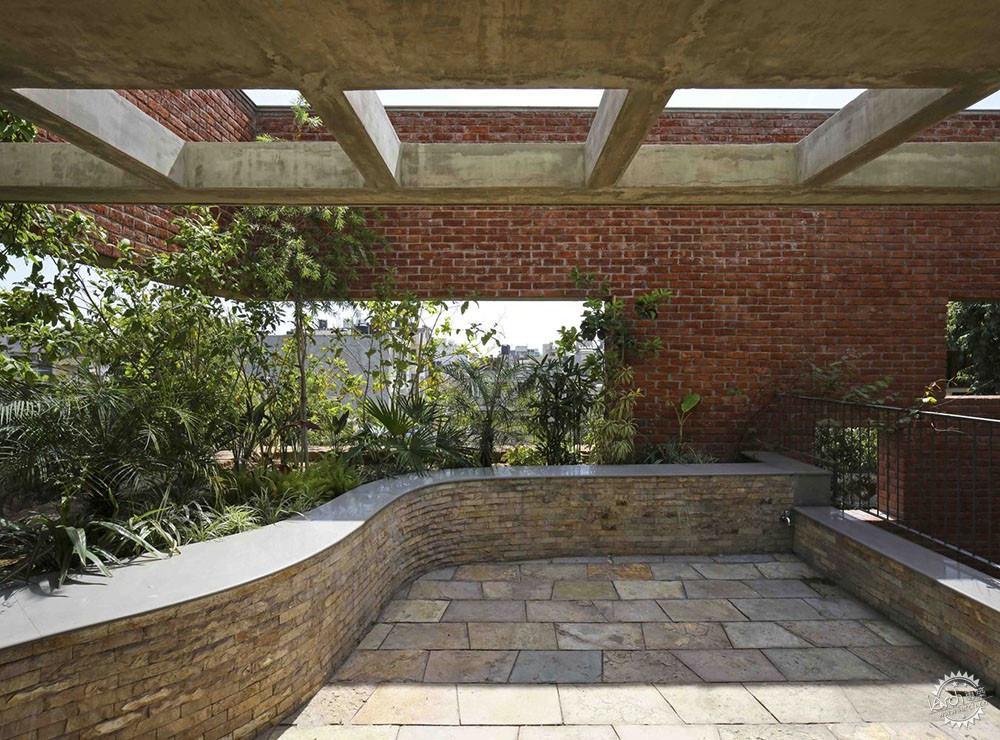
该项目更多的使用了本土的技术和技能,比如裸露的砖块外墙采用了硅涂层。雨水收集、太阳能采暖和软件技术被用于研究房屋的被动式能源规划。整个屋顶绿化为城市农场,种植了植物和蔬菜供业主使用。
The project uses more of indigenous technologies and skills, such as silicon coating for the exposed brick facade. Rainwater harvesting, solar heating and a high degree of software technology was used to study passive energy planning for the house. The entire rooftop is green as an urban farm with a garden and vegetable patch planted for use by the owners.
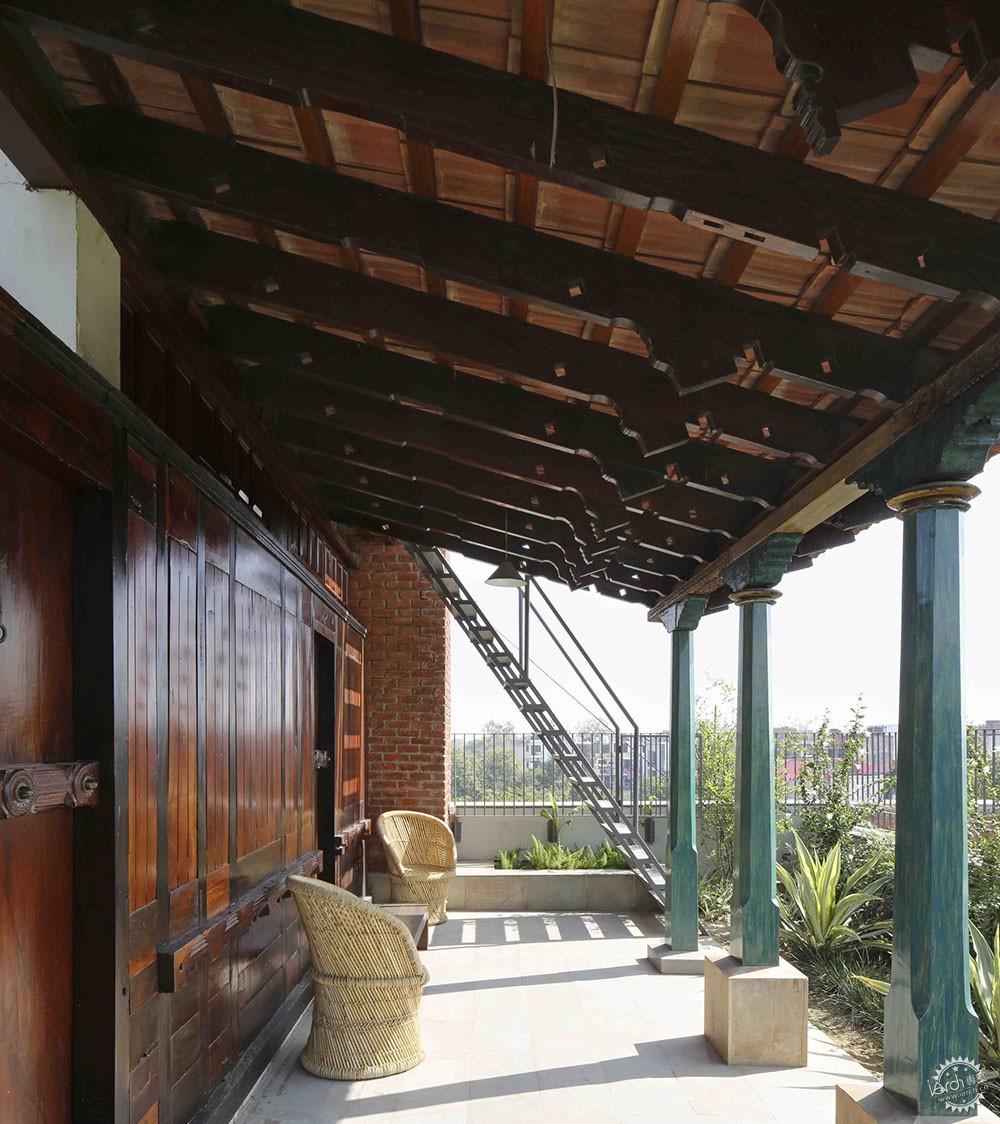
设计师专业的态度确保了房子的总造价在每平方米500美元以下,自入住以来,除了卧室外,住户并不需要在充满光线的空间里安装窗帘。
Meticulous attention has ensured that the total constructed cost of the house stands at just under USD 500 per sq.m. Since moving in, the families have not yet needed to install curtains in their light-filled spaces except for their bedrooms!

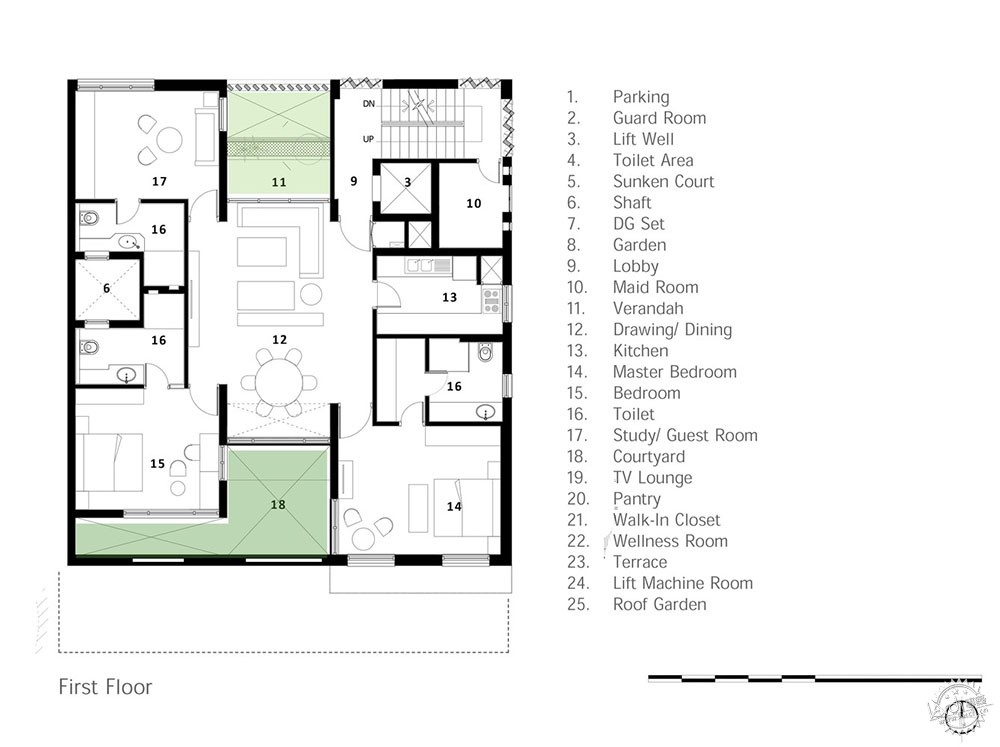

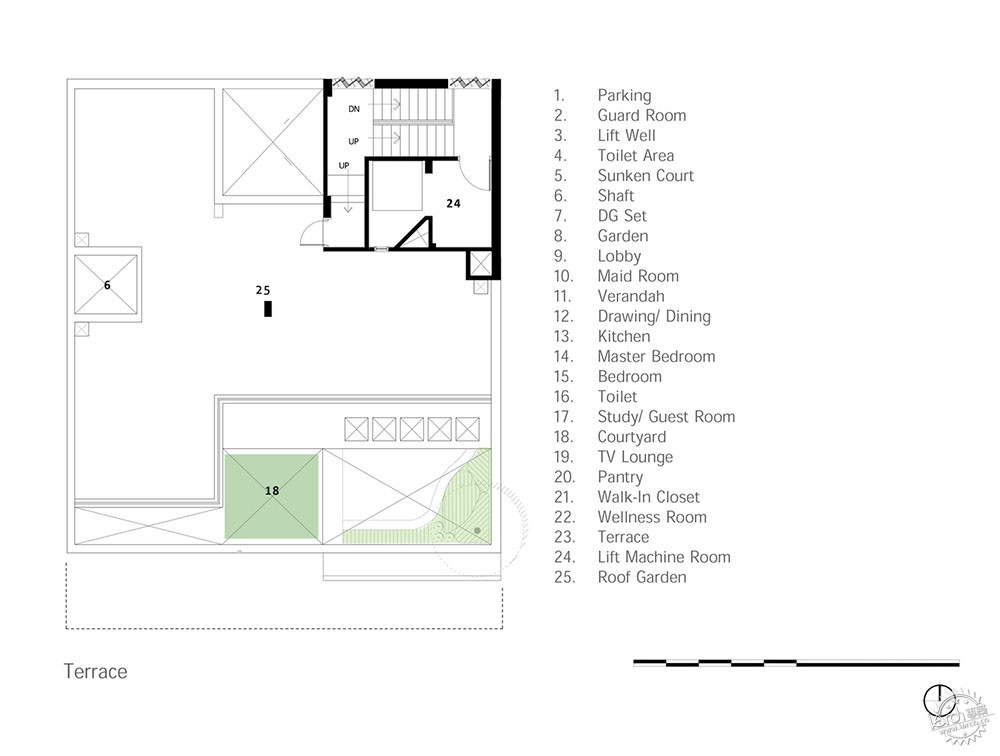
在这个国家,人们把钱花在运用昂贵材料的华丽表达和房屋外立面的残缺细节上,同时并不在意内部恶劣的居住条件。这个项目低调而又独特的表达方式,吸引了周边居民的极大兴趣。作为居民和小开发商,他们愿意了解相对较小的投资如何实现更高的“生活质量”,希望在“本土”层面重新定义设计,即如何在不增加任何成本的情况下增加建筑的价值。
In a nation driven by money being spent on ostentatious expressions of expensive materials and vestigial details on home facades with deplorable living conditions inside – the understated yet unique expression of the house has invited a huge amount of interest among the neighbourhood. As residents and small developers, they come in to understand how relatively small investments could achieve a much higher “quality of life”, hopefully redefining at a “local” level on how design can add value without any added cost.
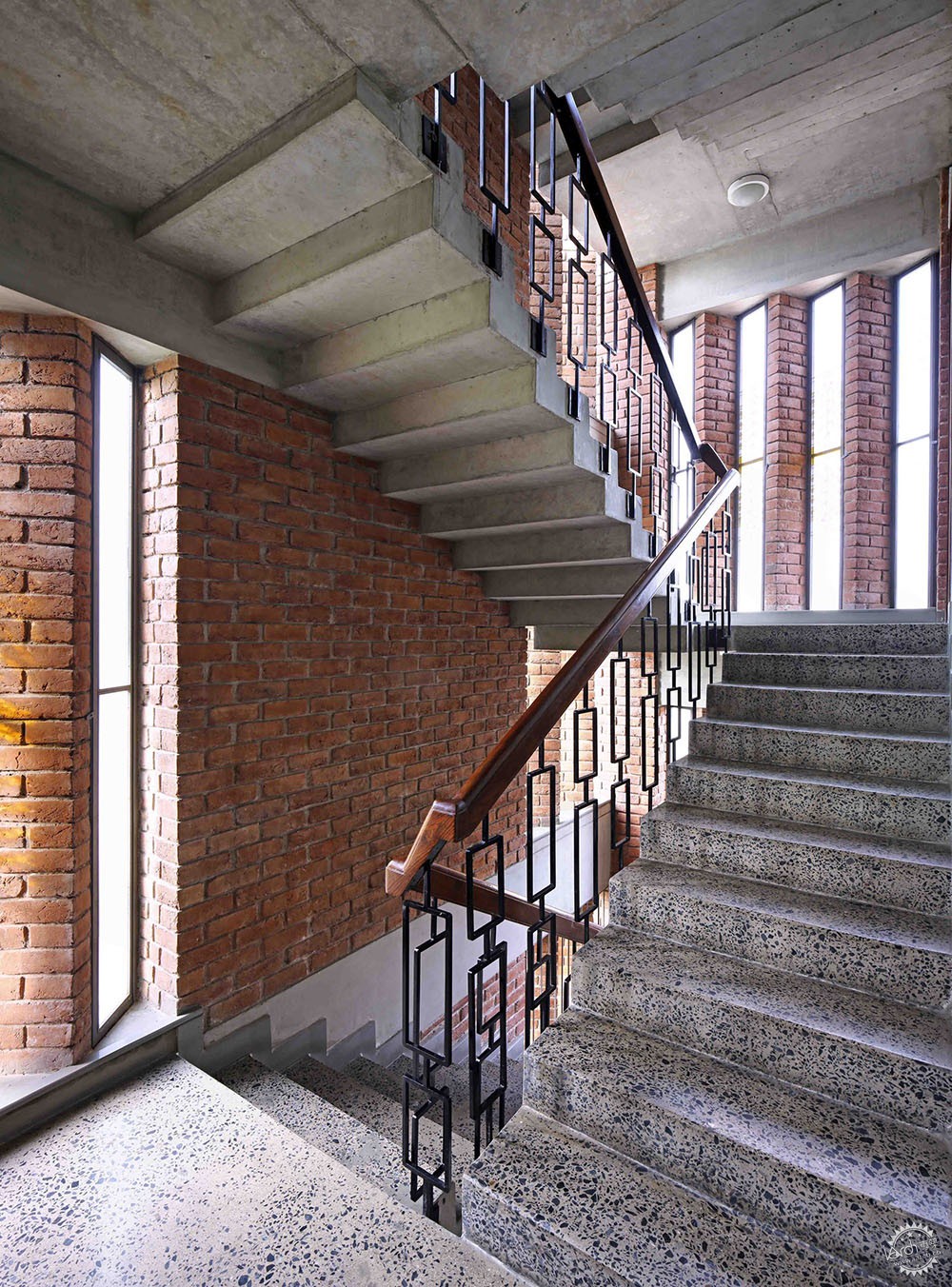

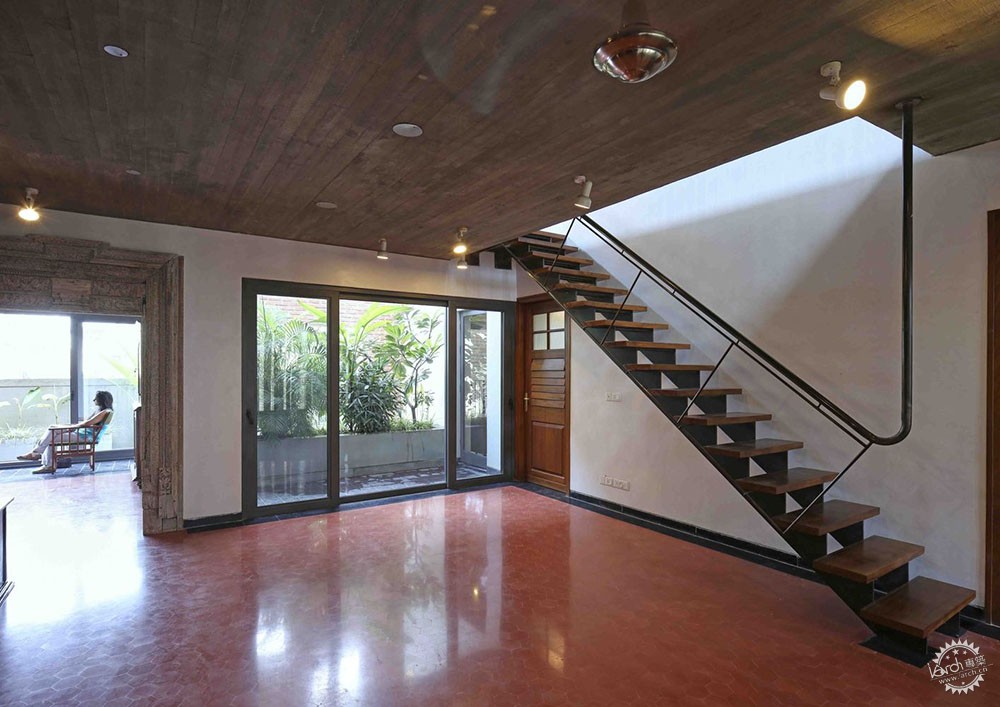
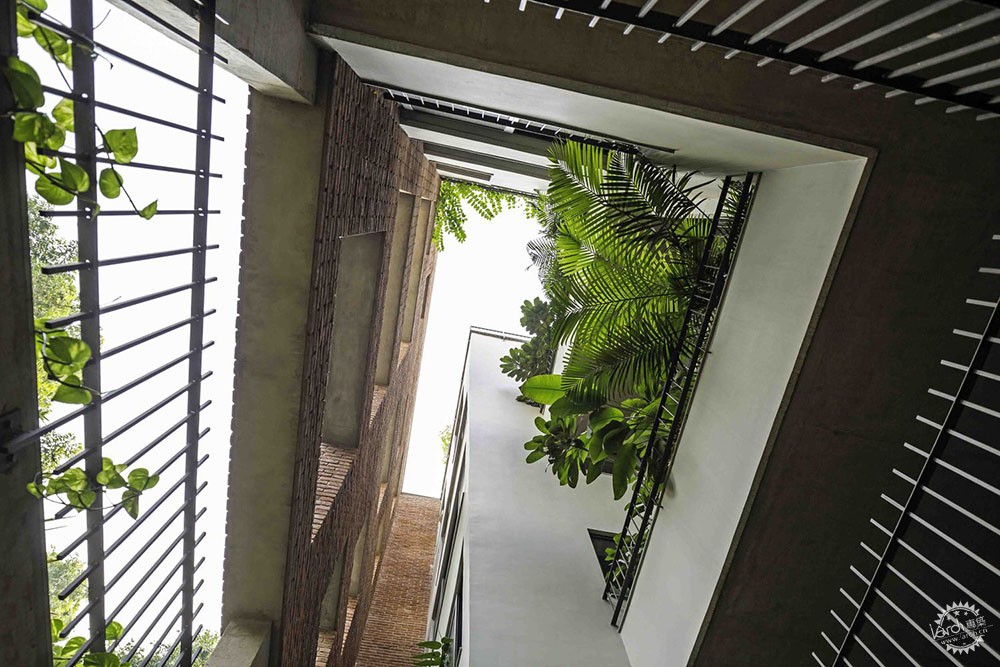
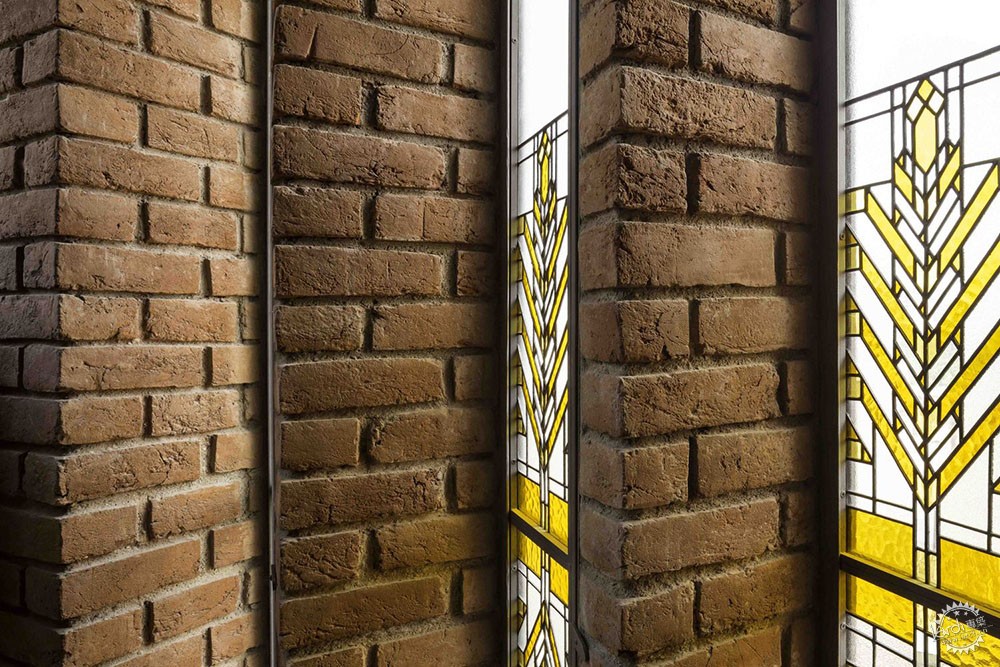
建筑设计:Studio Lotus
类型:住宅
面积:1000 m2
项目时间:2015年
摄影:Edmund Sumner, Randhir Singh
城市:新德里
国家:印度
HOUSES•NEW DELHI, INDIA
Architects: Studio Lotus
Area: 1000 m2
Year: 2015
Photographs: Edmund Sumner, Randhir Singh
|
|
